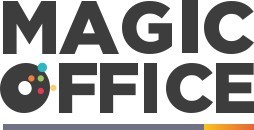
Understanding Miscommunication in Indian Workplaces
Recognizing the Roots of Miscommunication
Miscommunication is a critical issue faced by many Indian workplaces and can manifest in various forms. Understanding the origins and nature of such miscommunication is pivotal to mitigating its impact. The Indian business landscape, characterized by diverse cultures and languages, presents unique challenges to effective communication. Poor communication can arise from language barriers, unclear messages, or assumptions made in culturally diverse teams.It's crucial for employees at all levels of the company to acknowledge the cost of poor communication. Miscommunication is more than just a simple misunderstanding; it signifies a gap in employee communication. This gap can lead to costly mistakes and wasted time. Furthermore, employees might not always have the requisite communication skills necessary to convey or receive information effectively in the workplace.
Communication in the workplace is an ongoing challenge due to the nature of Indian work environments, where teams are often a mix of different linguistic and educational backgrounds. It becomes essential for business leaders to invest in communication training and tools that foster effective communication among employees. This investment can improve team dynamics, increase productivity, and reduce hidden costs associated with misunderstandings.
Addressing communication isn’t merely a luxury—it's a necessity for enhancing both employee engagement and the overall productivity of the business. As Indian companies continue to grow and compete on a global scale, bridging the communication gap through effective strategies can offer a significant competitive edge.
One approach to improve communication, particularly in environments like factories, is the implementation of innovative solutions such as whiteboard solutions. These tools help in enhancing communication efficiency by displaying real-time information to all team members, thereby reducing miscommunication.
Financial Implications of Miscommunication
The Financial Ripple Effect
Miscommunication in the workplace can lead to significant financial ramifications for businesses. When communication isn’t effective, it isn’t just about the immediate error; it sets off a chain reaction of costs and loss of productivity. Understanding these hidden costs can help business leaders develop better strategies to prevent them.
Poor communication skills among employees can result in wasted time. Studies estimate that employees spend approximately 17% of their workweek clarifying miscommunications, which could otherwise be used for productive tasks. This becomes a cost employee burden, as the time spent on correcting these mistakes leads directly to a decrease in productivity for the company.
Moreover, businesses face the cost poor manifestation in terms of rework. When tasks are completed with incorrect information, they must often be redone. This rework not only drains resources but also diminishes the morale of the teams, further hindering effective productivity. Technology and communication tools aimed at improving communication workplace can be crucial in managing these unnecessary expenses.
In the context of knowledge workers, miscommunication equates to opportunities lost. Decisions based on inaccurate information may lead to flawed strategic directions, affecting revenue potential and business growth. Furthermore, inadequate communication skills among team members can lead to misunderstandings that damage team cohesion, impacting overall employee engagement and retention rates.
Training employees in communication isn’t just a strategy for smoother day-to-day operations; it’s a worthwhile investment to reduce these hidden costs. By focusing on effective business communication, companies can significantly mitigate financial losses while enhancing employee satisfaction and productivity. For a better understanding of these communication objectives in companies, visit the objectives of communication in Indian companies.
Impact on Employee Morale and Productivity
Impact of Poor Communication on Workforce Dynamics
Miscommunication in the workplace is more than just a barrier to efficient processes; it has significant implications for employee morale and productivity. When communication falters, the workplace turns into a hotbed of confusion, leading to decreased employee engagement and satisfaction.
Employees who are not effectively communicated with often experience frustration and disengagement. These feelings can be infectious, spreading through teams and affecting overall morale. A work environment plagued by poor communication often sees a rise in absenteeism and employee turnover, driving up training and recruitment costs. The hidden costs of these issues are detrimental to any business, stretching financial and human resources thin.
Teams bogged down by ineffective communication also face productivity challenges. Time lost to clarify misunderstandings or rectify errors caused by poor communication translates into a tangible cost. For knowledge workers, the cost of wasted time is incredibly high, as they are forced to divert focus from their primary tasks.
Business leaders must acknowledge that to maintain a productive workforce, improving communication skills is paramount. Employee communication strategies should aim not only to inform but to engage, fostering a more cohesive team environment. Investing in communication tools and training is essential in rectifying these issues, enhancing the overall productivity and morale of employees year after year.
Case Studies: Real-World Examples from Indian Companies
Real-Life Consequences of Miscommunication
Miscommunication in the workplace can have tangible costs for Indian companies, affecting both the bottom line and the overall work environment. These costs are not always immediately apparent; instead, they often manifest over time, revealing the hidden impacts that poor communication can have on business outcomes.
Lost Opportunities and Wasted Resources
Consider the scenario where a team misunderstands project requirements. Such misalignment can lead to the deliverables not meeting client expectations, resulting in lost business opportunities. The need to redo work not only consumes additional resources but also wastes valuable time that could have been spent on other productive tasks. Ineffective communication often results in hidden costs that undermine efficiency and damage the company's reputation.
Impact on Employee Engagement and Collaboration
Employees who feel heard and understood are more likely to be engaged and contribute effectively to team efforts. However, poor communication can create an environment where misunderstanding thrives, negatively impacting employee morale. When team members feel disconnected, collaboration suffers, leading to a decline in overall productivity. This ripple effect often translates into increased turnover rates, as frustrated employees seek better communication cultures elsewhere.
Training and Development Costs
Addressing the aftermath of miscommunication may require additional training programs to enhance effective communication skills among team members. Although this investment can improve workplace communication, the initial lack of effective communication tools and skills incurs additional expenses for the company. Business leaders must recognize these hidden costs and proactively invest in communication training to mitigate the long-term financial implications.
Case in Point: An IT Company’s Struggle
An Indian IT firm suffered significant financial losses due to inadequate communication strategies. Teams working in silos failed to share crucial updates on project timelines, leading to missed deadlines and dissatisfied clients. The financial repercussions prompted the company to invest in comprehensive communication skills training, ultimately resulting in improved team dynamics and timely delivery of projects.
Strategies to Mitigate Miscommunication
Strategies to Enhance Communication Effectiveness
Miscommunication in the workplace often leads to costly inefficiencies. Addressing this requires implementing effective strategies to improve communication among employees.- Invest in Communication Training: Equip teams with essential communication skills. Regular training sessions can focus on listening, clarity, and feedback. Employees often underestimate the cost of poor communication, so it is crucial to stress the importance of transparent sharing of information.
- Cultivate a Culture of Open Dialogue: Encourage open dialogue where every employee feels comfortable sharing thoughts and ideas. This cultural shift can mitigate the impact of poor communication by fostering an environment of trust and transparency.
- Implement Clear Communication Protocols: Establish clear protocols for communication within the company. Define how, when, and which channels are to be used to communicate different types of information. This approach reduces potential for miscommunication, aligning everyone with company objectives.
- Leverage Technology Tools: Utilize communication tools that facilitate real-time collaboration and information sharing. Software platforms can bridge gaps and ensure that all employees, from different levels of the company, remain informed and aligned.
- Continuous Feedback Mechanism: Establish a feedback loop that provides insights into the effectiveness of current communication practices. Regular reviews can help identify areas for improvement, preventing further costs associated with ineffective communication.













